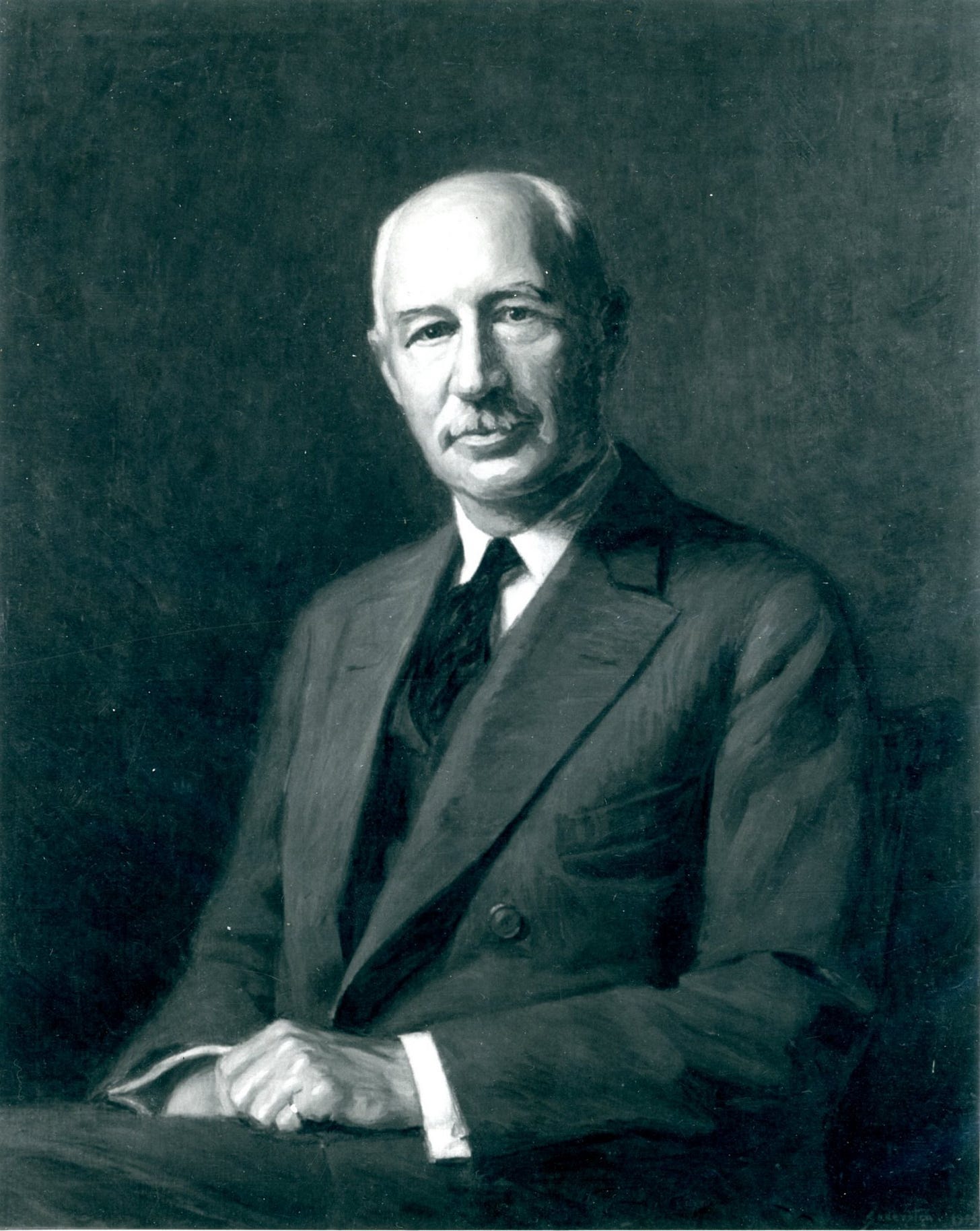Today's Tidbit... Walter Camp And The 1924 Rule Changes
Walter Camp was part of the 1924 rules committee that adjusted football rules, as he had been since the 1876 Intercollegiate Football Association meeting that established American football’s first rules. Football changed dramatically during that time, with Camp promoting fundamental changes to the game and acting as the editor and spokesperson for the rule-making process.
Although many disagreed with one rule or another over the years, the 1924 rules were among the most troublesome because several rules were contradictory or opened loopholes for undesirable tactics. Back then, the rules committee solicited input from coaches, officials, and others and then convened to design and write the new rules. Depending on the year, the committee obtained feedback on the rules and made changes, but there came a point when they moved ahead with the final version. The rules were a detachable insert within Spalding’s football guide.
In 1924, the book and rules came in August, giving coaches and officials a few weeks to pore over the rule changes and attend pre-season Q&A sessions in each committee member's region.
Unfortunately for the 1924 committee, people spotted several problems with the published rules. For example, the 1920s witnessed stiff leather incorporated into almost all shoulder pads despite the hard materials violating a rule against player equipment with hard materials. The committee’s updated Rule III required that shoulder pads have padding on the outside to protect those being hit by the shoulder pads, despite few commercially available shoulder pads having outer padding. Those that were available were the least expensive pads due to their lack of the leather and fiber components everyone wanted. In addition, by the time the rules were published, schools did not have time to order pads that complied with the rules, assuming they were in stock, which they were not. When confronted about this issue, Camp acknowledged the problem, indicating that it would be up to the game officials not to enforce the rule.
Likewise, Rule VIII required kickoffs from the middle of the field or anywhere behind it, while the return team had to be behind its 40-yard line until the ball was kicked. As written, the combination allowed the kicking team to back up to its 35-yard line for the kick, onside kick the required 10 yards, and recover the ball before the return team could advance from its 40-yard line to recover the kick.
To remedy the situation, the rules committee agreed to modify the rule to allow the receiving team to stand behind a restraining line 10 yards from wherever the kicking team chose to kick the ball.
The most complicated problem came with Rule XVIII, which defined being onside and offside. Section 1 reasserted the longstanding definition that a player was offside if a teammate behind that player last touched the ball. Section 2 indicated that an offside player could recover a fumble or muff but could not otherwise touch the ball until an opponent touched it. Then, Section 3 allowed any player to recover a punt or kick if the ball had not crossed the line of scrimmage. (A blocked punt or field goal attempt became a free ball.)
A coach attending the meeting pointed out to Camp that the combination of rules would allow punters to execute a controlled punt into a teammate's back and recover the ball for a first down. That led Camp and others to suspend the meeting, go into session, and return with a revised rule that a kick blocked by a player on the kicking team would count as a down, eliminating the problem scenario.
There were other oddities in the published 1924 rules, but despite revising several rules, the committee opted not to formally publicize the rule changes, expecting the word to get around informally. How some of these rules were interpreted and enforced during the 1924 season is difficult to know, but the errors led to a rededication to think through the implications of future rule changes.
Planning to address these and other issues, the rules committee met in March 1925, starting on a Friday morning. After making several rule changes and working past midnight, the committee returned to work Saturday at 9:00 AM. However, Walter Camp did not appear for the meeting, and after he failed to arrive by 11:00 AM, committee members asked the hotel to check on Camp. Upon entering his room, the hotel staff found that Camp had passed away in his sleep sometime early Saturday morning at 65.
The committee adjourned immediately after nearing the news and did not meet again in 1925, making only eight rule changes. One addressed a 1924 shortcoming by formalizing the rule that kicks that did not cross the line of scrimmage counted as a down.
Unfortunately, Camp’s last tour on the rules committee may have been the least successful. Still, the committee returned to its regular pattern of editing the rules in 1926 after the shock of Camp's passing subsided.
Football Archaeology is reader-supported. Click here to buy one of my books or otherwise support the site.




